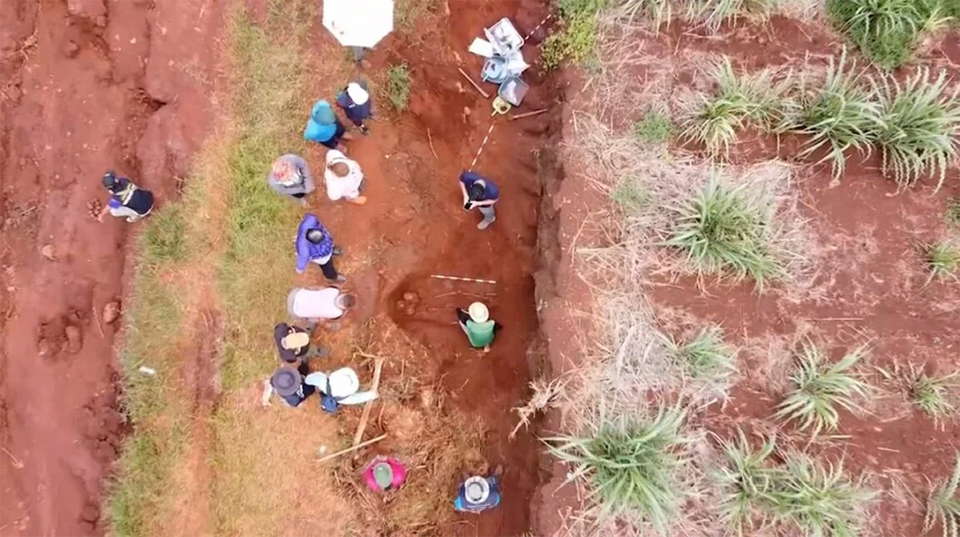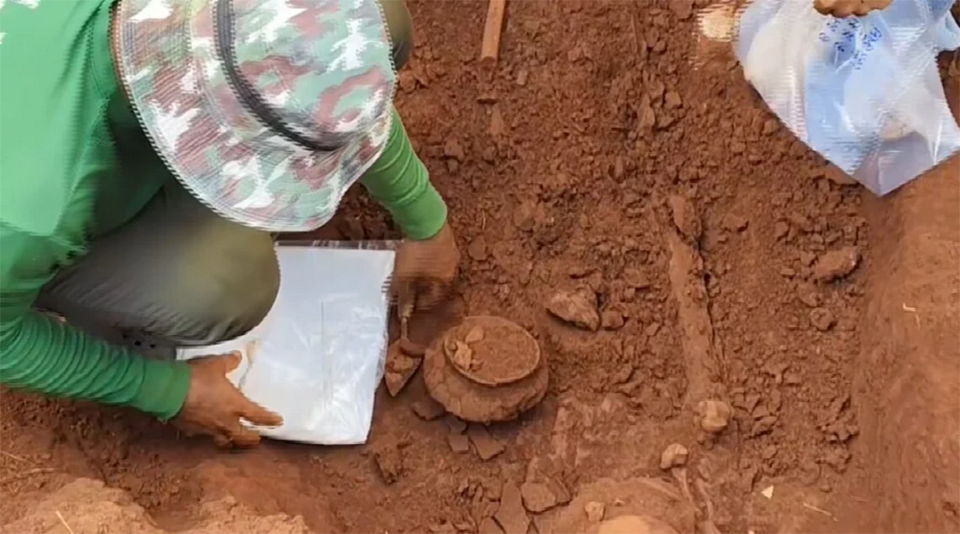
NAKHON RATCHASIMA, Thailand – A human skeleton, estimated to be between 1,500 and 2,500 years old, was recently discovered in Khon Buri district.
The Fine Arts Office 10 reports that these ancient inhabitants likely practiced agriculture, hunting, gathering, and even metal smelting.
Found after heavy rains caused soil erosion, the skeleton, believed to be a 168 cm tall male, was buried with five earthenware offerings. Nearby artifacts, including earthenware pellets and polished stone axes, indicate hunting and butchering. Crucially, the presence of metal slag suggests early metalworking skills.
This find, dating to the Late Prehistoric period, significantly enhances our understanding of the region’s ancient cultures. It also highlights Nakhon Ratchasima’s historical trade importance, with forest products exchanged for rock salt, a factor that attracted human settlement for at least 3,700 years. (TNA)











